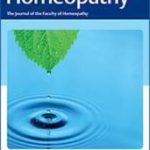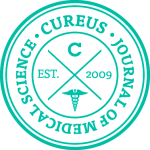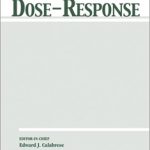Ferrum phosphoricum D12 Treatment Affects J774A.1 Cell Proliferation, Transcription Levels of Iron Metabolism, Antioxidant Defense, and Inflammation-related Genes

Background Ferrum phosphoricum (FP) is prescribed as a homeopathic remedy to treat the early stages of fever and inflammation in cases of colds or flu, muscle fatigue and anemia. We aimed to analyze the molecular mechanisms of action of FP D12 on cell proliferation and mRNA expression of iron metabolism, antioxidant defense and inflammation-related genes in mouse J774A.1 macrophages. Methods - Cell proliferation was examined using the MTT test. RT-qPCR analyses were performed to estimate gene expression changes. Relative gene expression levels were calculated using the 2–ΔΔCt method. The effect of treatment using FP D12 tablets was compared with that using placebo tablets (PT). Results - FP D12 in low concentrations (0.0125 mg/mL to 0.025 mg/mL) significantly stimulated proliferation of J774A.1 cells by up to 11% (p < 0.01) versus control untreated cells and by up to 40% (p < 0.01) versus PT-treated cells in the respective concentration. FP D12 versus PT induced a significant increase in mRNA expression of ferritin light chain (Ftl1) (by 8-fold, p < 0.01), β-2-microglobulin (B2m) (by 2.5-fold, p < 0.05) and iron-responsive element binding protein 2 (Ireb2) (by 4-fold, p < 0.05), and induced a slight decrease in myosin IE (Myo1e) mRNA expression levels (by 0.4-fold, p < 0.01) in macrophages. A highly significant (r2 = 0.99, p < 0.05) correlation was observed between Ireb2 and B2m transcription levels. Significant stimulation of antioxidant enzyme Gpx-1 (by 1.27-fold, p < 0.01) in cells by 0.025 mg/mL FP D12, but a slight decrease (by 0.12-fold, p < 0.05) in 0.0125 mg/mL-treated cells, was observed. A significant increase in the gene expression of IL-1β (by 3.5-fold, р < 0.05) in macrophages was also detected. Conclusion - Ferrum phosphoricum in D12 dilution potentially exhibits iron retention, antioxidant and immunomodulation activities, possibly by modulating transcription levels of related genes in non-stimulated mouse macrophages.








Lascia un commento
Devi essere connesso per inviare un commento.